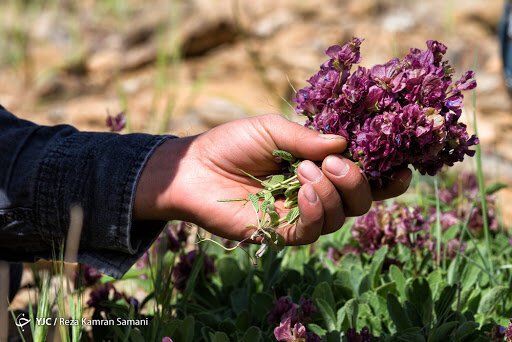Traditional medicine comes to fight COVID-19

TEHRAN – To speed up treatment, researchers have been searching for available medicine and therapies effective in treating coronavirus patients. In this line, some drugs were selected but none was a definitive cure. Now, traditional herbal medicine steps in to reduce the burden.
In a press briefing on Saturday, Health Ministry spokesperson Sima-Sadat Lari confirmed 12,931 new cases of COVID-19 infection, raising the total number of infections to 841,308. She added that 596,136 patients have so far recovered, but 5,778 still remain in critical conditions of the disease.
During the past 24 hours, 431 patients have lost their lives, bringing the total number of deaths to 44,327, she added.
Iran, like any other countries in the world, has been involved in research to identify a solution to contain the pandemic, scientists are trying to play a role in the production of effective medicine in the treatment of various diseases, including COVID-19, despite sanctions and global pressures.
Meanwhile, the Food and Drug Administration has recently approved four domestically produced herbal medicine effective in COVID-19 treatment and has issued a production license for two of them.
The first herbal medicine in this collection is an oral spray containing six herbal essential oils and helps to improve the pulmonary complications of coronavirus, including shortness of breath, cough, and arterial oxygenation.
The second one is a syrup containing the extract of two herbs, which according to the clinical trial evidence provided if used, helps to improve the symptoms of fatigue and anorexia.
Moreover, a center offering traditional medicine services to coronavirus patients was inaugurated in Tehran’s Shahid Beheshti University of Medical Sciences in early November.
In the first phase, 100 traditional medicine physicians have been organized for face-to-face and virtual visits, and 200 experts have acquired the necessary skills in intensive courses to prepare for telephone consultations, he explained.
Mostafa Ghanei, head of the scientific committee of the National Headquarters for Coronavirus Control in August said that there are currently 30 projects underway nationwide in the field of traditional medicine, herbal medicine, and supplements to fight the coronavirus pandemic.
Chinese herbal medicine
Mehrdad Karimi, an associate professor at the Department of Traditional Medicine at Tehran University of Medical Sciences, told Jam-e Jam the Persian language daily about the use of traditional and herbal medicine in the world.
“A traditional Chinese medicine specialist told us that during the first three weeks of the epidemic, China was shocked by the high number of patients; at that time, only 30 percent of traditional medicine was used to treat patients, which were used to treat SARS. But the use of traditional Chinese medicine in the Wuhan has reached 70 to 80 percent since April.
Currently, herbal medicine is prescribed for each patient, which increased traditional Chinese medicine used by patients to 90 percent, showing a remarkable rate. But in the meantime, some experts insist that traditional medicines have never been used in East Asia. Of course, in China, where traditional medicine is widely used, there are the same contradictions between traditional and modern medicine.”
Where scientific work is being done on traditional herbal medicine, no errors or problems are caused and cannot be challenged, Karimi highlighted.
Safety issues should be considered and patients should be checked during medication, because medicinal plants, like chemical drugs, have side effects, he noted.
Treatment matters the most
Arman Zargaran, a faculty member of the Department of Traditional Medicine at Tehran University of Medical Sciences, said that research in the field of traditional medicine has a completely scientific academic process and mechanism
and is recognized in the world.
What matters is the treatment of the patient, and it does not matter if the process is chemical, traditional, or herbal. Any method that can cure the disease or even reduce the symptoms and complications of the disease is a priority, he emphasized.
However, not all the country's efforts are focused on the manufacture of herbal medicines, there are currently several hundred research projects in the country, of which about 80 to 90 are related to herbal medicines, he stated.
In fact, there is no bias towards a particular method, and the goal is to improve patients, and all go through scientific methods and clinical trials.
8,000 herbal species grow in Iran
So far, about 30,000 plant species are identified in the world, with Iran's share of about 8,000 species that its plant diversity is more than the whole of Europe.
Currently, about 2,300 species of medicinal plants have been identified in the country; while medicinal plants account for one-third of the medicines used in human societies, the share of world trade in these products is about $124 billion and Iran’s share is $570 million, which is only 0.5 percent of the total.
The per capita consumption of medicinal plants in Iran is about one kilogram of dried plants, in other words, 83,000 tons of medicinal plants worth 1.2 trillion rials (around $29 million at the official rate of 42,000 rials) are consumed in the country, while in Europe this amount is 900 grams and in the United States is 2.5 kilograms.
FB/MG
